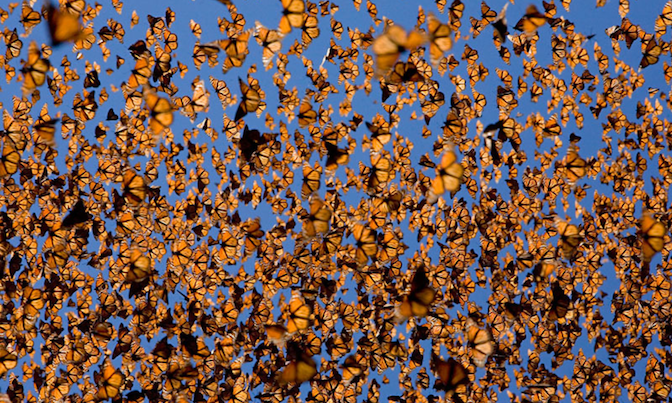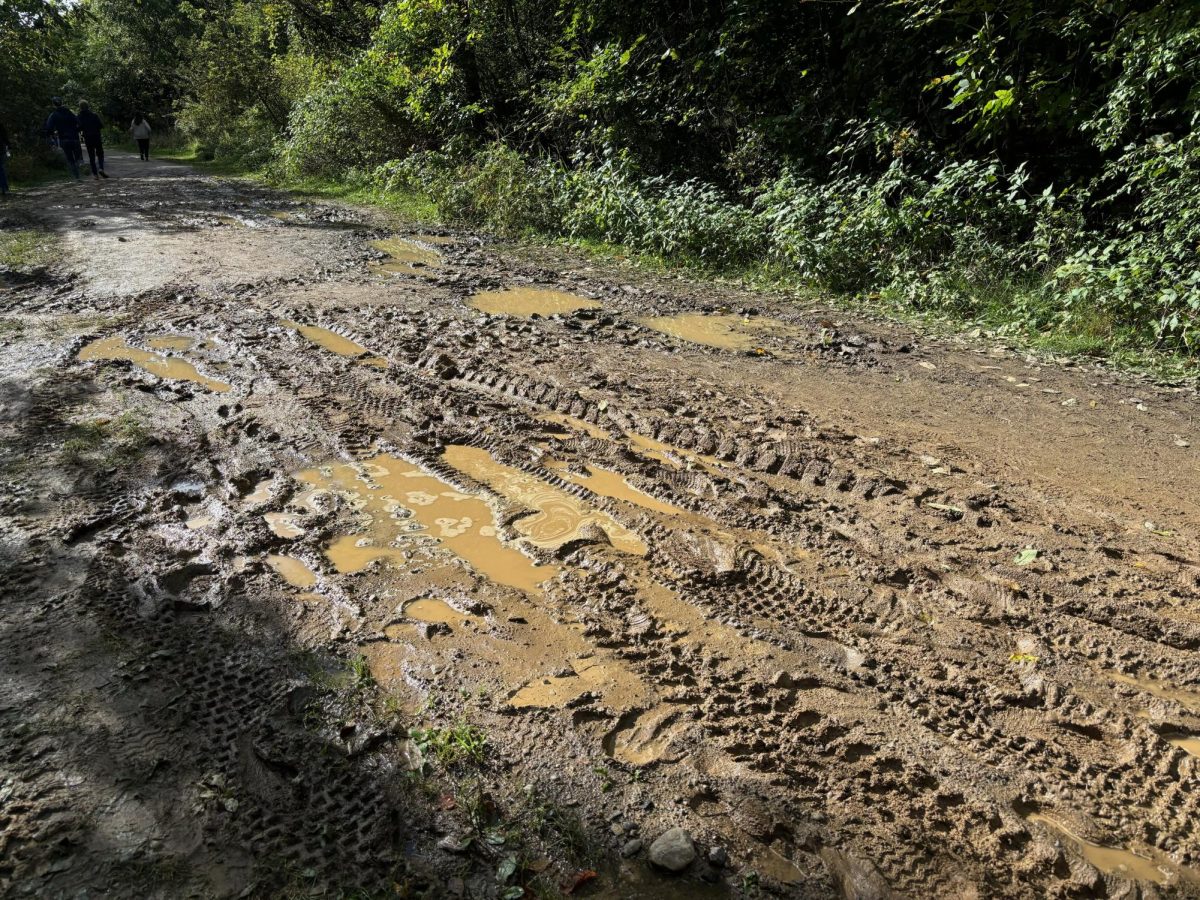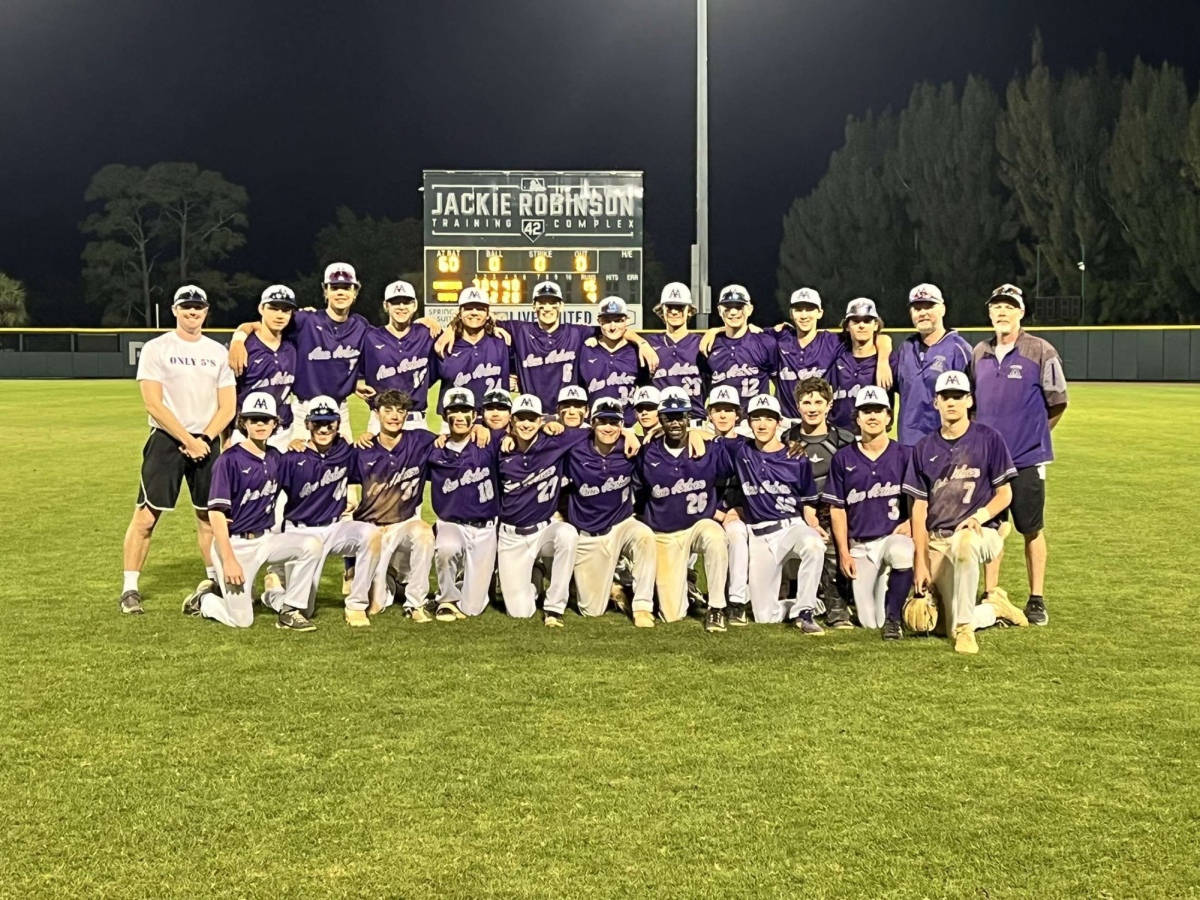Recent Monarch Migration Brings Worries
December 13, 2013
If you look outside the windows of most suburban homes in the United States, you will find that they have a lot in common. Outside you would likely see short, stubby, manicured grass. Past the grass in the front yard, you would see oily, impervious black pavement. And if you looked further, you would see that all the other house’s landscapes are the same. But there used to be something else there. Where the plain grass is now, where the house sits, and where the pavement lies, there used to be an abundance of native plants. Insects that are struggling to survive in our world today were flourishing a few hundred years ago, living off of native plants like Milkweed, Bee Balm, and Purple Coneflower. When humans started to build huge shopping centers and parking lots in place of the plants, things changed for insects like the Monarch Butterfly.
Every year, millions of Monarch Butterflies migrate from the upper part of North America to Mexico or California. Some of the butterflies travel as far as 3,000 miles. This year, they were about a week late to Mexico. This is an indication that something is wrong. Compared to last year, the amount of butterflies that successfully migrated is currently down by 57 million. Only 3 million Monarchs have come to Mexico this year so far. Even the 60 million monarchs that migrated last year brought worries.
The Monarch population is dropping, and it is not something that can be ignored.
Out of all the various plants in the world, the black and orange butterfly depends the most on Milkweed. Monarch eggs are laid on a Milkweed plant, and when the larva emerges from its cocoon, it eats the plant’s leaves. Because the Milkweed’s leaves are poisonous (though not to the butterfly), the developing larva acquires a defense against its predators by storing the toxins in their body. As humans continue to destroy natural areas to build more homes, factories, and businesses, they contribute to the loss of this special plant, which leads to a smaller butterfly population.
This is not just a problem. It is a catastrophe, a cataclysm, and a disaster that is waiting to happen. If this issue continues to progressively get worse, it is not just going to affect the butterflies.
It is going to affect us too.
Other insects will be hurt. As more buildings and roads are built, the habitats for insects will be destroyed, and they will have fewer plants to survive off of. Then the insect population will decrease sharply, and there will not be as many bees to pollinate the plants that we eat for food.
This scary topic is not something that has gone unnoticed to all people, however. Monarch Watch is organization that is aware of this growing problem. According to their website, the director of the group, Chip Taylor, said, “Monarch butterfly populations are declining due to loss of habitat. To assure a future for monarchs, conservation and restoration of milkweeds needs to become a national priority.”
When native plants are replaced with black tops and buildings, the insects are not the only ones who are affected. Native plants have extremely deep roots that soak up groundwater which helps to prevent nearby rivers from overflowing. These plants also keep pollutants out of rivers, which greatly helps the ecosystem around it. While the plentiful paved roads all across the country provide quick transportation, they also yield an unfortunate path for pollutants to reach rivers and other bodies of water. When it rains, the water collects oils from the pavement and pollutants from rooftops. Fertilizers and pesticides on lawns are also swept away by the rain. The polluted water then goes into storm drains, which are then deposited in a river. Regular grass presents a problem too. Compared to native plants, whose roots can be fifteen feet deep, grass roots are only a meager two inches.
This constant battle between native plants, and man-made things is being addressed locally. In Ann Arbor, Mich., there is a non-profit organization called the Buhr Park Children’s Wet Meadow Project. A wet meadow is an area filled with native plants that are planted in a depression. When it rains, water collects in the wet meadow, and keeps it from depositing pollutants in a nearby river. This organization has so far planted three wet meadows in the Buhr Park area. The park was once solely a soggy, grassy area when it rained, and now the park is drier after a storm.
Everyone cannot go and plant a huge wet meadow in their uniform green yard. In fact, most people will not want to cover their entire yard with native plants. Instead people should choose a portion of their property to grow native plants. It will help the environment. It will help Monarchs. It will help us. Most importantly, it will help the world.
Sources:
http://www.monarchlab.org/Lab/Expert/ReadExpertQuestionsAll.aspx
http://www.monarchwatch.org
http://www.nativeplant.com/index.html
http://www.nytimes.com/2013/11/24/sunday-review/the-year-the-monarch-didnt-appear.html?_r=1&
http://animals.nationalgeographic.com/animals/bugs/monarch-butterfly/
http://newswatch.nationalgeographic.com/2013/03/26/geography-in-the-news-monarch-butterflies-struggle/










